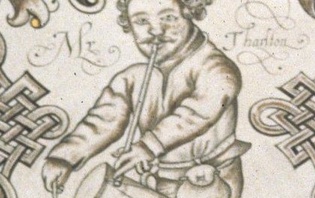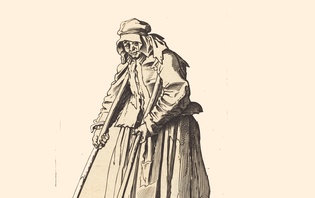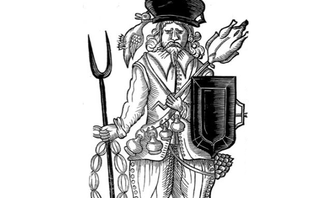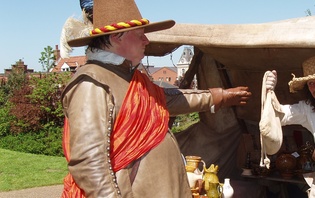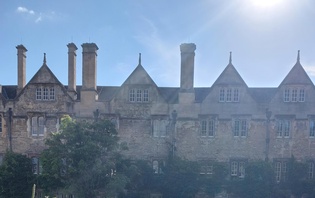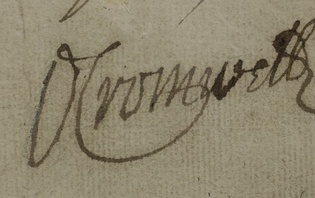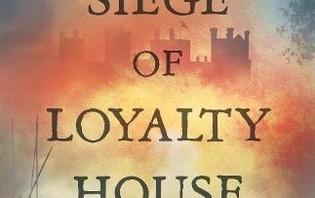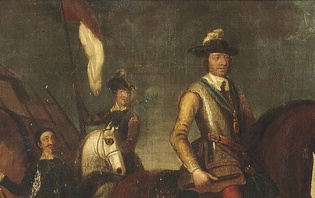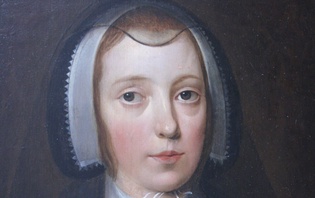Katherine de Luke: Widow, Petitioner, and Royalist Agent
When we encounter women petitioners from the Civil Wars, they all-too often appear simply as victims of conflict. Narrations of loss and bereavement permeate their supplications, along with the harrowing impact that this had on their daily lives. However, during the course of these narrations, details sometimes emerge of these women’s own wartime activities and contributions. In this week’s blog, Stewart Beale, introduces us to Katherine de Luke and her own incredible service for the royalist cause.
In September 1660 Katherine de Luke of the New Forest, Hampshire submitted a petition to Charles II at his royal court at Whitehall. Her husband, Philip, had served as an officer during the Civil Wars under Lord Ralph Hopton, where, according to Katherine, he ‘received such wounds… as shortened his days in misery’. She further claimed that her husband’s estate had been confiscated by parliament as a result of his loyalty to the royalist cause, and, in a second petition submitted to the Crown the following month, that her family had been ‘four times plundered by the enemy’. In a third and final petition presented in 1663, Katherine noted that her eldest son had been ‘sold away for his service… in Colonel Penruddocks design’. This referred to the abortive royalist uprising that took place in the south of England in 1655, after which many of the captured rebels were transported to Barbados, and twelve of the ringleaders, including Colonel John Penruddock, were executed for treason. Perhaps unsurprisingly, Katherine claimed that the events of the 1640s and 1650s had left her ‘reduced to great misery’.
Katherine was one of more than seventy royalist war widows who petitioned Charles II for relief during the first decade of his reign (1660-70). The majority of these petitioners were officers’ widows, and their supplications – like those detailed above – offer a harrowing insight into the suffering and bereavement caused by the civil wars. However, whilst most female war victims were likely to describe the military services of their husbands – including details of where they had served and who they had served under – Katherine’s petitions are somewhat unusual in that they detail her own wartime activism. She claimed to have served Charles I in ‘carrying [his] commissions’, and to have carried ‘letters and private intelligence… when none else durst adventure to do it’. Imprisoned by parliament for her actions, Katherine maintained that she had never wavered in her loyalty, even when subjected to torture. Incarcerated in Bridewell, she claimed to have been ‘whipped every other day, & also burnt with light matches… & cruelly tormented to make her betray her trust’.
Katherine appears to have served as an intelligencer, carrying private correspondence and military intelligence on behalf of the royalist cause. Nadine Akkerman has shown that both sides during the Civil Wars employed female spies and couriers, believing that their opponents were less likely to suspect women of performing such roles. Interestingly, two of the most well-known female Civil War intelligencers were war widows. Elizabeth Alkin, also known as ‘Parliament Joan’, served as a parliamentarian spy after her husband was hanged by the royalists during the early 1640s for espionage. On the royalist side, Katherine Stuart, Lady Aubigny, was imprisoned in the Tower of London in 1643 after her involvement in a plot to raise troops for Charles I was discovered. She had travelled to London from the royal court at Oxford under the pretence of settling the affairs of her late husband, Lord George Stuart, who had been slain at Edgehill in 1642, and was caught carrying a commission of array signed by the king. Another royalist widow, Elizabeth Cary, claimed in her petition to Charles II in 1660 that she had carried ‘proclamations and declarations from Oxford to London’ during the 1640s.
Along with her petitions, Katherine de Luke submitted several certificates to the Crown in support of her case. These suggest that her services were well known among leading royalists, and provide further insight into her actions during the 1640s. The first certificate, presented along with her 1663 petition, confirmed that Katherine had ‘been a great sufferer for her loyalty and service’. The document was signed by eight men, including John Ashburnham, former treasurer of the royalist army during the First Civil War. A second certificate signed by the Secretary of State Sir Edward Nicholas asserted that Katherine ‘deserves a very good reward for her service’, whilst a third noted that Katherine had been employed by Lord Hopton during the 1640s ‘for intelligence’.
Katherine’s petitions and other surviving evidence allow us to piece together her whereabouts during the 1640s. One of her certificates noted that Katherine had been present at Oxford during the First Civil War. In her 1663 petition, meanwhile, she cited her ‘service done… at Bristol’. Perhaps she had carried correspondence between the two cities. More remarkable, Katherine appears to have attended Charles I during his imprisonment in Carisbrooke Castle on the Isle of Wight in 1647-8. In 1660, the Convention Parliament appointed a committee to examine the death of Captain John Burley, who had been executed at Winchester in 1648 after attempting to rescue Charles I from prison. Burley’s wife, Elizabeth, sought to take advantage of the Restoration by ensuring that the judges and jurors who had passed sentence against her former husband were excluded from the Act of Indemnity and Oblivion. One of the witnesses to appear before the committee was Katherine de Luke, who claimed to have been ‘in the King’s chamber’ at the time of Burley’s rescue attempt. Despite being subjected to tight surveillance during his incarceration at Carisbrooke, Charles continued to smuggle letters into and out of the castle, and, given the claims made in her petitions, Katherine may well have played a role in this.
Given her suffering and services, it is perhaps unsurprising that Charles II responded favourably to Katherine’s petitions. In 1660 she was issued a royal warrant entitling her to all of the ‘roots and stumps of wood and trees remaining in the earth in the New Forest to a height of under three feet’. Firewood was an important commodity during the seventeenth century, and the warrant granted Katherine an abundant supply both for her own use and to sell. However, that she felt obliged to petition the Crown again in 1663 suggests that the warrant was never enacted, or was insufficient to maintain her. The outcome of her latter petition remains unknown.
Historians have long recognised the important roles women played during the Civil Wars. They donated money and plate to the armies, nursed wounded soldiers, helped to fortify garrisons, defended properties, and, as we have seen, served as couriers and spies. The petitions for relief submitted by female war victims are often utilised by historians to demonstrate the hardships inflicted on those who were forced to live through the bloodiest wars in British history. Yet, as the example of Katherine de Luke demonstrates, these documents can also be used to further our understanding of the various roles women played during the conflict, and to demonstrate how previously unknown women made important contributions to the war efforts of both sides.

